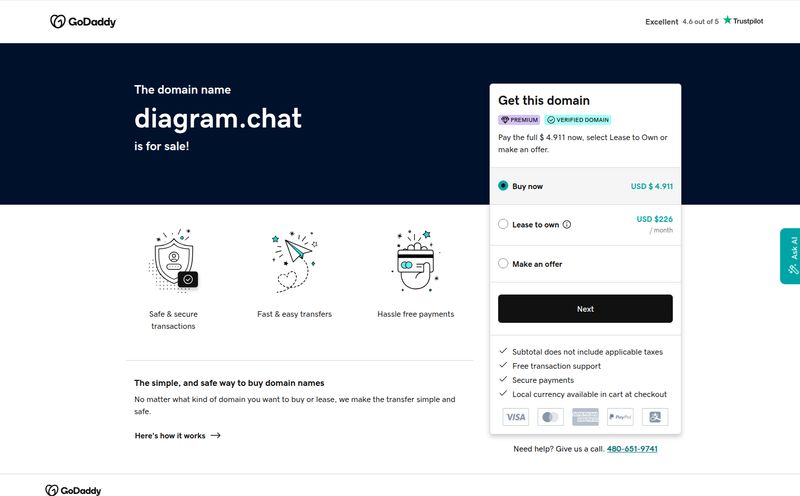We’ve all been there. You land on an e-commerce site, you know exactly what you want. You type “blue floral midi dress” into the search bar. And what do you get back? A random assortment of blue t-shirts, a pair of floral sneakers, and a maxi dress that’s definitely not “midi.”
It’s frustrating, right? You bounce. The store loses a sale. And the whole sad cycle repeats itself across the internet. For years, as an SEO and traffic guy, I’ve watched businesses pour money into getting people to their site, only to have them trip at the finish line because of a dumb, literal-minded search bar. It’s like hiring a world-class party planner but having a bouncer at the door who only lets in people named “Steve.”
So, when a platform like Marqo comes along, making some pretty bold claims about “smarter search” and “better conversion,” my professional curiosity gets the best of me. Is this just another buzzword-filled solution, or is it the real deal? I’ve spent some time digging into it, and honestly, what I’ve found is pretty compelling.
So, What’s the Big Deal with Marqo Anyway?
At its core, Marqo isn’t just a search bar replacement. That would be selling it way short. Think of it more as a brain for your website's product discovery experience. Instead of just matching keywords letter-for-letter, Marqo uses AI—specifically, vector search and sophisticated embedding models—to understand the intent and context behind a search.
If that sounds like a bunch of tech jargon, here’s the simple version. Your old search bar is like a cranky librarian who only knows the Dewey Decimal System. You have to ask for a book using the exact right code. Marqo is like a cool, well-read bookseller who, when you say “I’m looking for a mystery that feels like a cold winter night,” knows exactly which three books to hand you. It gets the vibe.
It does this by turning everything—your product titles, descriptions, customer reviews, and even your images—into complex mathematical representations (vectors). Then it does the same for the customer’s search query. The result? It can find the closest conceptual match, not just the closest text match. Game-changer.
Your Clunky Old Search Bar is Leaking Money
The homepage for Marqo has a headline that hits hard: “Stop Losing Sales to Broken or Silly Search.” And they’re not wrong. The cost of a bad user experience is huge. Brands like The RealReal saw a 12% improvement in conversion after implementing Marqo. Shutterstock saw a 23% increase in search success. These aren’t vanity metrics; that’s real money being left on the table by outdated tech.
The old way involves painstaking, soul-crushing manual tagging. Someone, somewhere, has to sit and add tags like “dress,” “blue,” “floral,” “summer,” “party” to every single relevant item. Miss a tag, and the item becomes invisible to certain searches. It’s inefficient and, frankly, a terrible use of human time. Marqo automates this, analyzing the item to understand its attributes on its own.
How Marqo Rewrites the Search Playbook
This is where it gets interesting. Marqo’s approach is fundamentally different from the legacy search platforms that many big e-commerce sites are still built on. It's a different philosophy.
It Thinks in Concepts, Not Just Keywords
The most mind-blowing feature for me is the multimodal search. A user can literally upload a photo of a chair they saw in a magazine and Marqo can find similar-looking chairs in your inventory. Or they can type “a shirt that looks like this” and paste in an image URL. This moves beyond language and into the realm of visual and conceptual understanding. For industries like fashion, home decor, or art, this capability is nothing short of revolutionary. It's how people actually think and shop.
Personalization That's Actually Personal
Here’s another big one. Marqo can connect to your user behavior data—clicks, add-to-carts, purchase history. It then uses this information to personalize search results for each individual user. If a customer has a history of buying high-end, minimalist furniture, their search for “coffee table” will surface different results than a user who typically buys rustic, farmhouse-style pieces. It’s a subtle, powerful way to make customers feel understood, which is the holy grail of online retail.

Visit Marqo
The 3-Step Dance to a Smarter Search
I know what you're thinking. "This AI stuff sounds complicated and expensive to set up." I thought so too. But Marqo seems to have put a lot of thought into making the onboarding process surprisingly straightforward. They boil it down to three main steps:
- Connect your data: You basically point Marqo to your product catalog. It has integrations to make this part as painless as possible, so you're not stuck in API hell for three months.
- Train a search engine: This is the AI part. You train the model on your data and, crucially, on user behavior. This teaches it what a “good” result looks like for your specific audience.
- Plug in and go live: Once the engine is trained, you integrate it into your site. The goal is a seamless transition without having to rebuild your entire front end.
It’s obviously more involved than that under the hood, but from a user perspective, it’s designed to be a relatively low-friction upgrade.
Let's Talk Money: Marqo Pricing Explained
Pricing is always the elephant in the room. Marqo offers a pretty clear two-tiered approach, which I appreciate. No hiding behind a “Contact Us for a Quote” wall for their entry-level plan.
| Plan | Best For | Key Features |
|---|---|---|
| Cloud | Startups, SMEs, and businesses wanting to get started quickly. Starts at $25/month. | Fully managed, model deployment & customization, scalable instances, high availability. |
| Enterprise | Large-scale operations with specific needs. Custom pricing. | All Cloud features plus custom model training, result re-ranking, merchandising controls, enhanced SLA, and direct access for ML scientists. |
The Cloud plan, starting at $25/month, is incredibly accessible. It lowers the barrier to entry for smaller companies to start using technology that was once only available to giants like Amazon or Google. The Enterprise plan is for the big players who need white-glove service and deep customization, which makes perfect sense.
The Real Scoop: Pros and Potential Pitfalls
No tool is perfect, and it’s important to go in with eyes wide open. Based on my analysis, here’s my honest take.
The Wins
The upside is pretty clear. You get a search function that can genuinely increase conversions, as shown by their case studies. The automation of tagging and collection generation saves an immense amount of time and resources. And the ability to offer image search and true, behavior-based personalization can be a massive competitive advantage. For many businesses, this could be the single biggest lever they can pull to improve their on-site experience.
Some Watch-Outs
On the flip side, there are a few things to keep in mind. First, to get that juicy personalization, Marqo needs user interaction data. If you're a brand new site with very little traffic, the personalization features won't have much to learn from initially. Second, while Marqo provides over 150 pre-trained models, if you need a truly custom-trained LLM for a very niche application, that can take time and expertise. Finally, as with any AI system, there can be a bit of a “black box” effect. You’re trusting the model to make the right connections, and occasionally it might surface something unexpected. It requires a bit of a mental shift away from the absolute control of manual, rule-based systems.
Answering Your Burning Questions about Marqo
What exactly is vector search?
Think of it as search that understands relationships and context. Instead of looking for the word 'boat', it looks for the concept of a boat. This means it can also find related items like 'yacht', 'skiff', or 'catamaran' even if the user didn't type those exact words. It's all about semantic meaning.
How does Marqo personalize results?
It analyzes a user's behavior on your site—what they click on, what they buy, what they ignore. Over time, it builds a profile of their preferences and subtly re-ranks search results to show them items they are statistically more likely to be interested in.
Is it difficult to integrate Marqo into an existing website?
According to their documentation and process, they've worked to make it as smooth as possible. It’s not a simple WordPress plugin, it’s a powerful engine. But it’s designed to be integrated via APIs, which is standard practice for modern web development. It doesn’t require you to rebuild everything from scratch.
What kind of businesses benefit most from Marqo?
Any business with a large and diverse catalog of products or content. E-commerce is the most obvious one (fashion, furniture, electronics), but also media companies (like Audioboom), stock photo sites (like Shutterstock), or any platform where discovery is important.
Is there an open-source version?
Yes, Marqo has an open-source foundation. This is great for developers who want to experiment and self-host. The Cloud and Enterprise offerings are essentially managed, scaled-up versions of this core technology with added features and support.
Final Thoughts: Is It Time to Upgrade Your Search?
Look, the internet is only getting more crowded. Customer expectations are higher than ever. Simply having a search bar that works “okay” isn’t good enough anymore. It needs to be smart, intuitive, and helpful. It needs to be an asset, not a liability.
From what I've seen, Marqo represents a significant step in that direction. It’s taking enterprise-level AI search technology and making it accessible. The focus on conversion, personalization, and understanding user intent is spot-on. While it requires data and a bit of a new mindset, the potential return—in both customer satisfaction and cold, hard revenue—is difficult to ignore. If your search bar is still acting like that cranky librarian, it might be time to introduce it to a new, much smarter friend.



